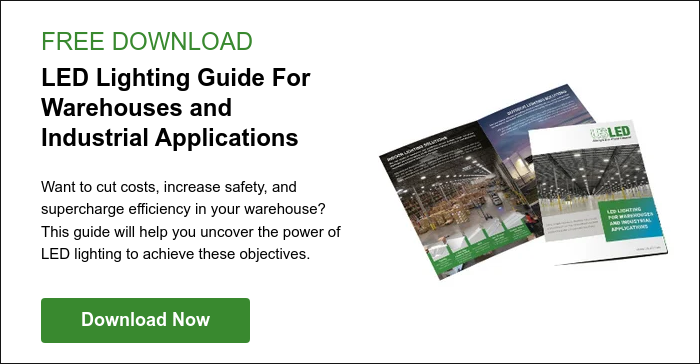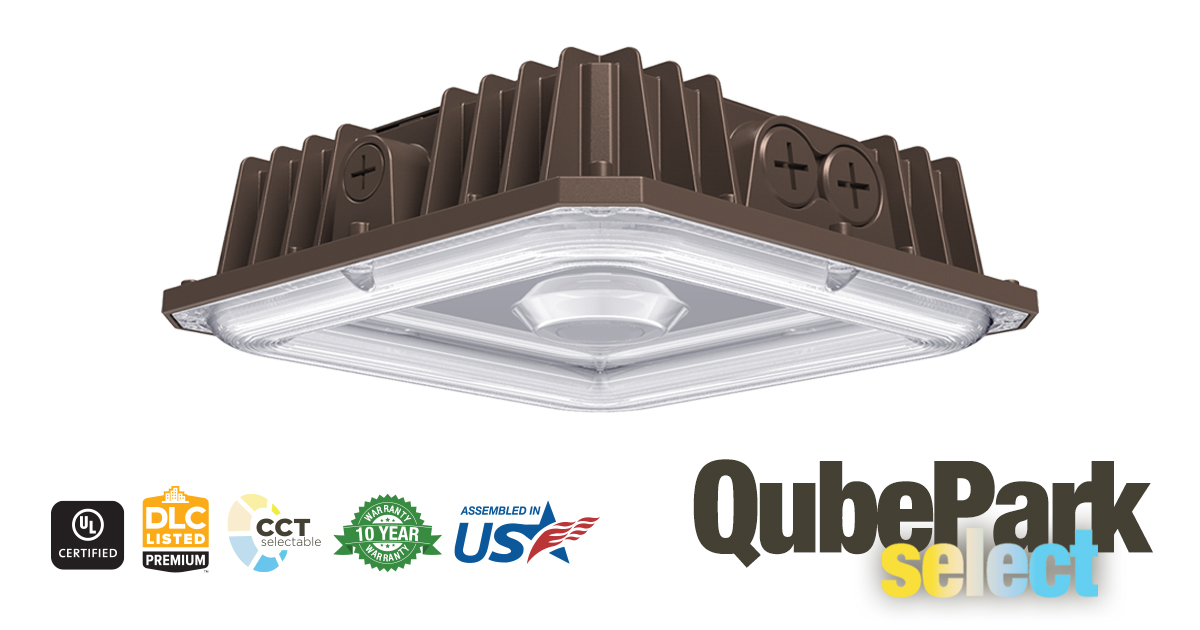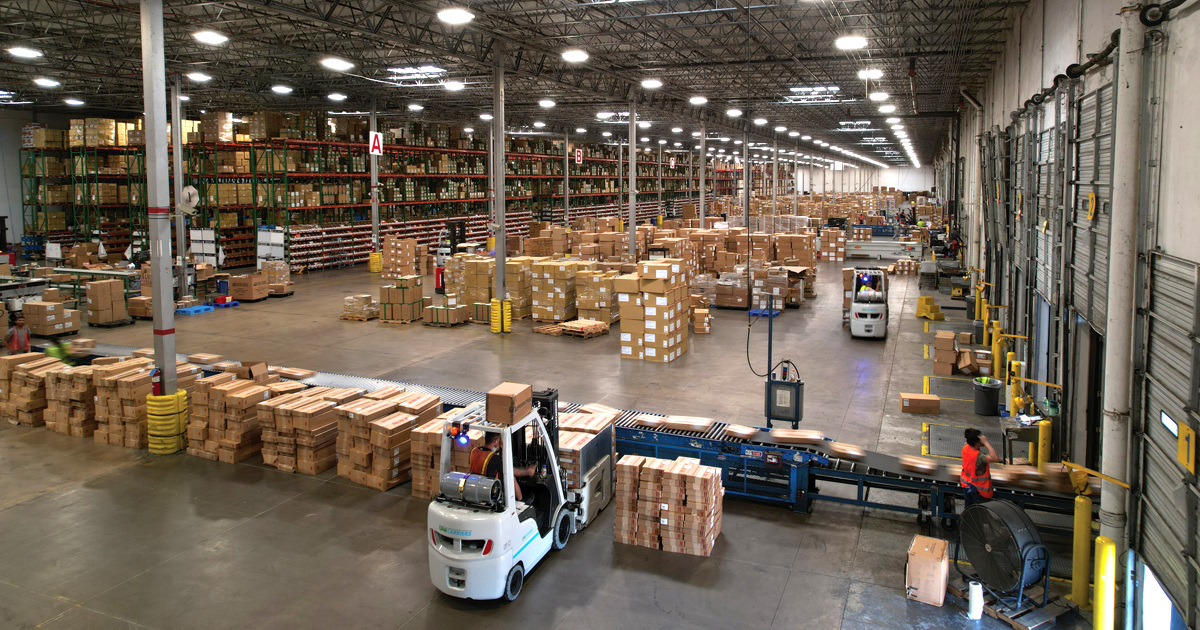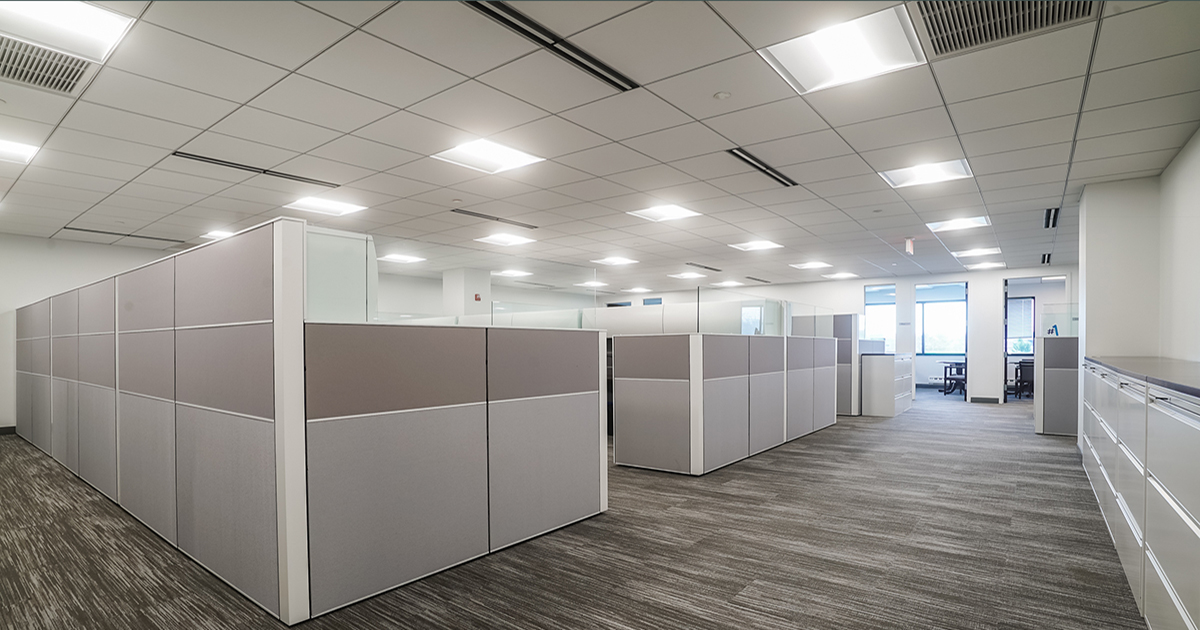6. Reduced Maintenance
Maintenance can be a significant operational expense for warehouses. LED warehouse lighting requires less maintenance due to its long lifespan and durability. When considering commercial warehouse LED lighting, one frequently underestimated advantage is the reduction of maintenance costs. With warehouse LED light fixtures, the need for staff to replace lamps or other components diminishes, virtually eliminating maintenance programs and associated labor required for servicing lights.
7. Environmental Benefits
LED warehouse lighting is a smart and responsible choice for your facility. LEDs consume less energy, reducing greenhouse gas (GHG) emissions or CO2 equivalent associated with electricity production. Reducing GHG emissions helps lower a property's carbon footprint, positively impacting the environment. Additionally, LED lights for warehouses do not contain harmful substances like mercury, making them safer to dispose of and recycle. Organizations prioritizing LED lighting upgrades in their warehouses and distribution centers significantly contribute to sustainability goals and reduce environmental impact.
8. Flexibility and Control
One of the notable benefits of LED warehouse lighting is its flexibility and control. LEDs can be easily integrated with advanced control systems like motion sensors and dimmers. This allows for greater customization and optimization of lighting, ensuring that areas are only lit when necessary. For instance, LED lights can be programmed to automatically dim or turn off when a specific location is not in use, leading to additional energy savings. Such control can improve operational efficiency and create a more productive working environment.
9. Enhanced Productivity
Proper lighting can significantly impact employee productivity. LED warehouse lighting provides bright and consistent illumination, which can improve focus and reduce eye fatigue. Workers can perform tasks more efficiently and with fewer errors, increasing productivity. Additionally, well-lit environments can enhance employee morale and job satisfaction.
10. Compliance, Rebates, and Incentives
Upgrading to LED warehouse lighting can help facilities comply with energy regulations and standards. Many regions offer incentives and utility rebates for adopting energy-efficient lighting solutions. These incentives offset the initial investment costs and make the transition to LED lighting more financially attractive. Moreover, the 179D Commercial Buildings Energy Tax Deduction allows property owners to claim tax deductions for installing qualifying energy-efficient systems, including interior lighting and control systems.
Take Advantage of The Benefits
LED warehouse lighting offers numerous benefits that enhance your facility's efficiency, safety, and commitment to sustainability. LED lighting is a smart investment for any warehouse, providing cost savings, energy efficiency, improved light quality, and reduced maintenance. Consider upgrading your warehouse lighting to LEDs to take advantage of these benefits and create a better working environment for your team. If you are ready to take the next step, request a lighting assessment of your warehouse.
FAQs About LED Warehouse
Why should I upgrade to LED warehouse lighting?
Upgrading to LED warehouse lighting offers substantial cost savings, superior energy efficiency, and high quality illumination. Compared to traditional lighting options like metal halide or fluorescent, LED warehouse lights consume significantly less energy, reduce maintenance and replacement costs, and deliver more consistent light output across large indoor spaces.
What type of LED lighting is best for high ceilings in warehouses?
For high ceilings and open spaces, high bay LED lights—including linear high bay lights and UFO high bay lights—are ideal. These LED fixtures provide uniform lighting distribution, ensuring that the floor below receives the desired light levels without excessive glare. US LED offers high bay lighting options with optimized beam angles and lumen output to meet diverse lighting requirements.
How does LED warehouse lighting reduce energy costs?
LED lights use up to 75% less energy compared to traditional lighting solutions, resulting in lower utility bills and overall operational costs. By delivering bright illumination with fewer fixtures and integrating with motion sensors, LED lighting solutions ensure you only use energy when and where it’s needed—maximizing energy savings across the warehouse.
Are LED warehouse lights suitable for cold or demanding environments?
Yes. LED warehouse lights perform reliably in cold storage, distribution centers, and industrial facilities. Unlike fluorescent or HID lights, LEDs maintain full light output in low temperatures and have a long lifespan, making them a dependable option for all warehouse environments.
How do I determine the right lighting layout for my warehouse?
The ideal lighting layout depends on your ceiling height, existing light locations, and the activities performed in each zone. US LED offers custom lighting solutions that consider foot candles, beam angles, and specific lighting needs like task lighting, storage areas, and retail spaces, ensuring adequate illumination throughout the facility.
Can LED warehouse lighting improve safety and productivity?
Absolutely. Proper lighting in a warehouse helps prevent accidents, boosts worker alertness, and ensures compliance with safety standards. With uniform illumination and superior light quality, employees can navigate aisles, read labels, and operate machinery more confidently, supporting both safety and productivity.
How does LED lighting affect maintenance costs in warehouses?
LED warehouse lights have a significantly longer lifespan than legacy fixtures, reducing the frequency of maintenance and replacement costs. This means fewer disruptions, safer operations, and less labor dedicated to servicing lights—especially important for high bay and ceiling lights that require lifts or scaffolding to access.
What is the difference between high bay and low bay lights?
High bay LED fixtures are designed for ceiling heights of 20 feet or more, delivering focused and powerful light. Low bay lights are better suited for ceilings under 20 feet, providing broader light distribution for closer-range tasks. Choosing the correct type ensures your warehouse receives efficient lighting where it’s most needed.
Are rebates or incentives available for switching to LED warehouse lights?
Yes. Many utilities and local governments offer rebates and tax incentives for installing energy efficient lighting solutions. US LED helps identify applicable programs and supports the application process. Additionally, you may qualify for the 179D Commercial Buildings Energy Tax Deduction, which can offset your investment.
Can motion sensors be used with LED fixtures in warehouses?
Yes. Motion sensor integration is a key benefit of LED technology, allowing warehouses to illuminate areas only when occupied. This leads to further energy savings and prolongs the lifespan of the fixtures—ideal for storage areas, seldom-used zones, and facilities focused on reducing energy costs.












